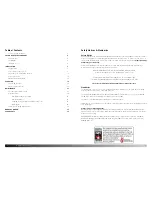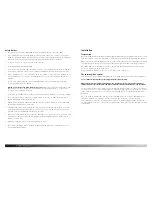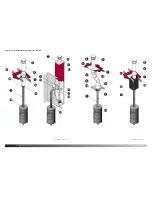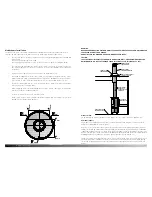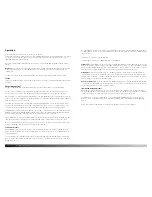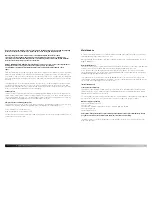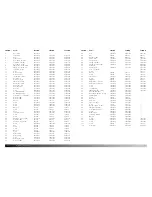
www.morsona.com
[ 18 ]
[ 19 ]
Operation
Before you light your heater here are a few considerations.
Your new Morsø heater is approved for use with Solid Wood Fuel Only. DO NOT OVERHEAT. If the heater
or chimney connector glows, your heater is overheating. Use Morsø stove thermometer for correct
operating temperature (#62901200).
Have your chimney inspected and cleaned at least once a year by an approved and certified chimney
sweep.
Be aware;
if the heater is not operated or installed in accordance with the manufacturers instructions
or the fuel quality is poor, creosote buildup may occur within the flue thus increasing the risk of a
chimney fire.
To reduce the risk of smoke and flame spillage, operate the heater only with door(s) fully closed.
Caution:
Your heater will be hot while in operation. Keep children, the infirm, clothing and furniture protected at
all times.
Choosing your fuel
All types of natural wood can be burned in your heater, but it must be well-seasoned and dry.
For the correct combustion efficiency and heat output, wood fuel should contain no more than 18%
moisture; this can easily be checked by using the Morsø Wood Moisture Meter (part # 62929900).
When wood fuel is cut to length you should allow for an inch gap between the fuel and side walls of the
firebox so as to ensure adequate circulation of the gases. Cut wood should also be split down middle to
allow for the quick release of moisture.
To naturally season wood fuel, it should be stacked and stored under cover in an airy location where
fresh air can move around the stack. Some soft woods may take as little as one good summer to sea-
son whereas harder woods such as oak, maple, and elm may require up to 18 months or more.
Avoid burning overly dry wood that is gray in color as under certain conditions it can cause performance
problems, such as back-puffing and poor performance. Well seasoned wood will be light to hold and
when looking at the ends it will show signs of cracking from the center outwards.
If your wood spits or sizzles when burned and your heater’s door glass persistently clouds up, it is pos-
sible that your wood is not properly seasoned (although a poor chimney draft can also cause this).
Never use drift wood (from the sea) as salt content may cause corrosion; construction wood that may
have been impregnated with chemicals should also be avoided.
Starting the first fire
When lighting your heater for the first time or after dormant periods, the initial fire should be fairly
gentle so that the finish paint can cure and the main cast plates of the heater can expand gently and
settle into position.
The heater paint cures at higher temperatures and it should be expected that during the initial firing
process a slight odor will be emitted into the room therefore, it is important to ventilate the room well
during this process.
The operating position of the air control lever (or dial) will vary and so will your loading intervals; both
are dependent on several factors, your lighting technique, the chimney draft, the fuel used and the heat
requirement etc.
Some basic techniques are outlined below.
In most models the heater is equipped with three air supplies:
primary air
is controlled by the air control lever situated beneath the ash lip or above the door, in some
models, on the door. Primary air passes through internal channels where it is preheated and eventually
washes at high speed down the back face of the door glass – the air-wash system. This super-heated
air helps to achieve high combustion efficiency of the volatile gases driven from the fuel.
Secondary air
is factory-set and enters the combustion chamber via the baffle assembly (or tubes)
located under the roof of the firebox. This source of combustion air mixes with the volatile gases and
given the right conditions, secondary combustion takes place making for very clean and low emissions.
This air supply is constant and cannot be varied.
pilot air
or tertiary air
enters the combustion chamber through a hole located behind the front bottom
section of the fire opening (below the front grates). This air ensures the embers in the fire bed stay hot.
Pilot air supply is factory-set and cannot be varied.
Lighting and loading procedure
When you are ready to light your heater, it is essential to quickly establish a chimney draft therefore
the initial lighting process will require you to leave the door cracked open for a few minutes. For added
safety, it is of course essential that you pay close attention to the heater at this point.
During the process it is also important to create and maintain a good bed of ash (1” thick) in the fire
bed. To achieve this be prepared to use 4-6lbs of dry kindling (thin sticks) during the initial lighting
process.
Before your start the lighting process fully open the primary air control lever (or dial).



